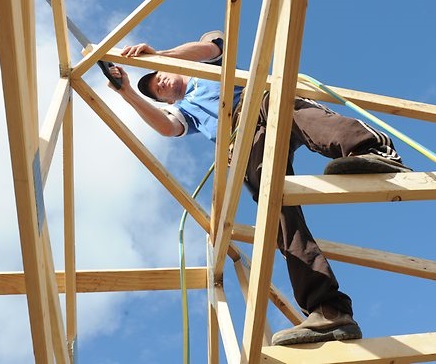'Near-miss' awareness as key to safe construction
 New figures from the Australian Bureau of Statistics (ABS) show the Australian building and construction industry has the best level of workplace safety in almost 15 years.
New figures from the Australian Bureau of Statistics (ABS) show the Australian building and construction industry has the best level of workplace safety in almost 15 years.
From a survey of adults in around 35,000 households nationwide, the ABS estimates that about 52,300 people in the sector experienced a work-related injury in 2013/14.
It is a clear drop from the 56,900 in the Bureau’s previous survey in 2009/10, and is actually the lowest rate of an injuries per thousand people (around 54.75) in any of the ABS’ surveys since the first one in 2000.
Across all kinds of work, the most common forms of injury are sprains and strains, followed by chronic joint or muscle conditions and cut wounds.
The most common causes of these injuries were lifting, pulling and pushing, followed by collisions with objects or vehicles and then falls.
Experts say that attitudes and practices within the sector have progressed in a number of areas, creating a greater willingness to talk openly about mental health issues and a deeper understanding of the value of ‘near-miss’ reporting.
But when the percentage reduction in injuries in construction is compared to the rate across the overall economy, the rate of improvement within the building sector appears slower than for industry in general.
“I think the next step is starting to get to that human error discussion,” safety expert Michelle Farley from Safety Journey has told industry press Sourceable.
“A robust safety management system and procedures will get us a certain way down the path toward eliminating harm and most major companies are a fair way down that path.
“Really the next step is saying; ‘Okay, we’ve got all of this great stuff, (but) the work is still being done by human beings who have emotions and subconscious things decision making processes as well as good and bad days. How can we start to learn about ourselves and what might drive our behaviour (conscious or otherwise) so that we can help ourselves to be safer and help our behaviours to be safer?’”








 Print
Print